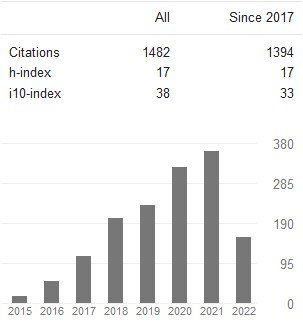Vitamin D receptor gene polymorphisms in nephrotic syndrome children
Abstract
Background: Vitamin D mechanism of action is organized by vitamin D receptors (VDRs), which are affected by diverse genetic polymorphisms, comprising FokI, ApaI, TaqI and BsmI restriction fragment length polymorphisms. It has been declared to be associated with several diseases. The aim of our study was to define the frequency and the association of VDR gene polymorphic variants in Egyptian children with nephrotic syndrome (NS). Subjects and methods: This study included 93 children classified as 50 children with nephrotic syndrome and 43 healthy children as control subjects. The four VDR polymorphic sites (FokI, ApaI, TaqI and BsmI) were genotyped by polymerase chain reaction-restriction fragment length polymorphism (RFLP) in EDTA blood. Serum vitamin D (25(OH)D3), parathyroid hormone (PTH), intact parathyroid hormone (iPTH) and fibroblast growth factor-23 (FGF-23) concentrations were assayed by ELISA (enzyme linked immunosorbent assay). Results: Genotype and allele frequencies were compared among nephrotic syndrome patients and controls. There was no significant difference (p>0.05) at three polymorphic sites FokI, ApaI and TaqI, except at BsmI a significant correlation was observed (P=0.013). There was significant correlation between ApaI and albumin /creatinine (p=0.016) in NS. Vitamin D and PTH levels were significantly lower in NS than controls (p=0.001) and (p=0.006) respectively, where iPTH and FGF-23 levels were significantly higher in NS (p=0.002) and (p=0.047) respectively. There were significant variances in the frequency of four-marker haplotype alleles in NS cases and controls. Conclusion: Our results revealed that BsmI VDR gene polymorphism may have a significant role in children having nephrotic syndrome
Keywords:
Nephrotic syndrome, Vitamin D Receptor, Gene polymorphism, GenotypingDownloads
Published
How to Cite
Issue
Section
Copyright (c) 2018 Gamila S.M. El-Saeed, Manal F. Elshamaa, Hanan Abdelaziz, Eman A. Elghoroury, Safaa M. Abdelrahman, Dalia A. Abdelhalim, Mona H. Ibrahim, Eman M. Hassan, Marwa M. Nabhan

This work is licensed under a Creative Commons Attribution-NonCommercial-ShareAlike 4.0 International License.



 Journal of Innovations in Pharmaceutical and Biological Sciences is licensed under a Creative Commons Attribution-NonCommercial-ShareAlike 4.0 International License. Based on a work at
Journal of Innovations in Pharmaceutical and Biological Sciences is licensed under a Creative Commons Attribution-NonCommercial-ShareAlike 4.0 International License. Based on a work at